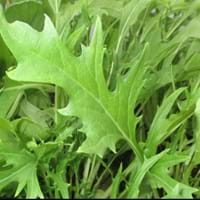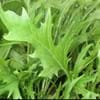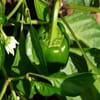Life Span
Biennial
Perennial
Type
Vegetable
Sedge or Rush
Origin
Europe, Asia
World/Pandemic
Types
Brassica oleifer, Brassica napus
Not available
Number of Varieties
Not Available
Habitat
Humid climates, Subtropical climates
Grassland, Wet lands
USDA Hardiness Zone
4-8
7-11
Sunset Zone
A1, A2, A3, H1, 1a, 1b, 2a, 2b, 3a, 3b, 4, 5, 6, 7, 8, 9, 10, 11, 12, 13, 14, 15, 16, 17, 18, 19, 20, 21, 22, 23, 24
H1, H2, 16, 17, 23, 24
Habit
Upright/Erect
Spreading
Flower Color
Yellow
Green, Brown
Flower Color Modifier
Bicolor
Not Available
Fruit Color
Brown, Black
Not Available
Leaf Color in Spring
Blue Green
Green
Leaf Color in Summer
Green, Light Green, Gray Green
Green
Leaf Color in Fall
Not Available
Green
Leaf Color in Winter
Green, Light Green, Gray Green
Not Available
Leaf Shape
Oval Cordate
Grass like
Plant Season
Spring, Summer, Fall, Winter
Spring, Summer, Fall
Sunlight
Full Sun, Partial Sun
Full Sun, Partial Sun, Partial shade
Growth Rate
Very Fast
Medium
Type of Soil
Clay, Loam, Sand
Clay, Loam, Sand
The pH of Soil
Neutral
Acidic, Neutral, Alkaline
Soil Drainage
Well drained
Poorly Drained
Bloom Time
Late Spring, Early Summer, Late Winter
Early Summer, Summer, Late Summer, Early Fall
Tolerances
Drought
Drought
Where to Plant?
Container, Ground
Container, Ground, Pot
How to Plant?
Seedlings, Stem Cutting
Bulbs, Divison, Rhizome division, Tubers
Plant Maintenance
Medium
Medium
Watering Requirements
Keep the Soil well drained, Needs watering once a week
Do not let dry out between waterings, Keep ground moist, Keep the Soil well drained
In Summer
Lots of watering
Lots of watering
In Spring
Moderate
Moderate
In Winter
Average Water
Average Water
Soil pH
Neutral
Acidic, Neutral, Alkaline
Soil Type
Clay, Loam, Sand
Clay, Loam, Sand
Soil Drainage Capacity
Well drained
Poorly Drained
Sun Exposure
Full Sun, Partial Sun
Full Sun, Partial Sun, Partial shade
Pruning
Prune back the growing tips, Remove all suckers
No pruning needed
Fertilizers
15-15-15 amounts, All-Purpose Liquid Fertilizer, Less fertilizing
can go long without fertilizers
Pests and Diseases
Aphids, Downy mildew, pink rot, Rust
Red blotch
Plant Tolerance
Drought
Drought
Flower Petal Number
Single
Single
Foliage Texture
Medium
Fine
Foliage Sheen
Matte
Glossy
Invasive
Sometimes
Sometimes
Attracts
Aphids, Beetles, Bugs
Birds, Butterflies, Flying insects
Allergy
Diarrhea, Nausea, Oral Allergy, sneezing, wheezing
Itchiness, Skin rash
Aesthetic Uses
Beautification, Showy Purposes
Beautification, Bog Garden, Showy Purposes, Used for decorating walls, fences, gates, hedges, etc.
Beauty Benefits
Blackheads, Blood purifying, Perfumes
Not Available
Environmental Uses
Food for birds, No fertilizer, pesticides, or herbicides needed, Shadow Tree
Air purification
Medicinal Uses
Cholesterol Free, Curing mumps and measles, Digestion problems, Diuretic, Palpitation, Piles
No Medicinal Use
Part of Plant Used
Leaves, Stem
Not Available
Other Uses
Making Sweet Scented Oil, Oil is used for aromatherapy, Oil is used in perfume, soaps, creams, etc.
Container, Decoration Purposes, Florist trade and landscaping, Used as Ornamental plant
Used As Indoor Plant
Sometimes
Yes
Used As Outdoor Plant
Yes
Yes
Garden Design
Edible, Herb / Vegetable
Bog Garden, Container, Tropical, Water Gardens
Botanical Name
BRASSICA rapa ssp. nipposinica
Cyperus papyrus
Common Name
Kabuna, Mizuna, Spinach Mustard, Tendergreen
Dwarf papyrus, Miniature papyrus
In Hindi
Mizuna
dwarf papyrus
In German
Mizuna
Zwerg Papyrus
In French
Mizuna
papyrus nain
In Spanish
Mizuna
papiro enano
In Greek
Mizuna
νάνος πάπυρο
In Portuguese
Mizuna
papiro anão
In Polish
Mizuna
krasnolud papirus
In Latin
Mizuna
P. papyrus
Phylum
Magnoliophyta
Tracheophyta
Class
Magnoliopsida
Magnoliopsida
Family
Brassicaceae
Cyperaceae
Clade
Angiosperms, Monocots
Angiosperms, Commelinids, Monocots
Tribe
Not Available
Not Available
Subfamily
Not Available
Not Available
Importance of Mizuna and Dwarf Papyrus
Want to have the most appropriate plant for your garden? You might want to know the importance of Mizuna and Dwarf Papyrus. Basically, these two plants vary in many aspects. Compare Mizuna and Dwarf Papyrus as they differ in many characteristics such as their life, care, benefits, facts, etc. Every gardener must at least have the slightest clue about the plants he wants to plant in his garden. Compare their benefits, which differ in many ways like facts and uses. The medicinal use of Mizuna is Cholesterol Free, Curing mumps and measles, Digestion problems, Diuretic, Palpitation and Piles whereas of Dwarf Papyrus is No Medicinal Use. Mizuna has beauty benefits as follows: Blackheads, Blood purifying and Perfumes while Dwarf Papyrus has beauty benefits as follows: Blackheads, Blood purifying and Perfumes.
Compare Facts of Mizuna vs Dwarf Papyrus
How to choose the best garden plant for your garden depending upon its facts? Here garden plant comparison will help you to solve this query. Compare the facts of Mizuna vs Dwarf Papyrus and know which one to choose. As garden plants have benefits and other uses, allergy is also a major drawback of plants for some people. Allergic reactions of Mizuna are Diarrhea, Nausea, Oral Allergy, sneezing and wheezing whereas of Dwarf Papyrus have Itchiness and Skin rash respectively. Having a fruit bearing plant in your garden can be a plus point of your garden. Mizuna has no showy fruits and Dwarf Papyrus has showy fruits. Also Mizuna is not flowering and Dwarf Papyrus is not flowering . You can compare Mizuna and Dwarf Papyrus facts and facts of other plants too.





